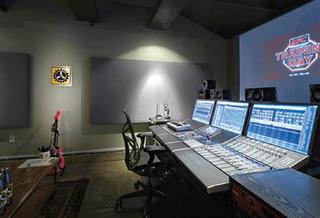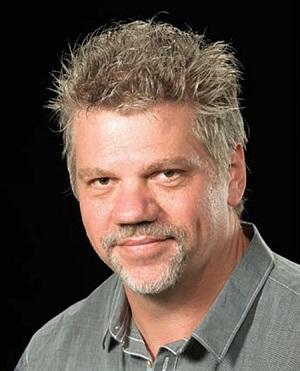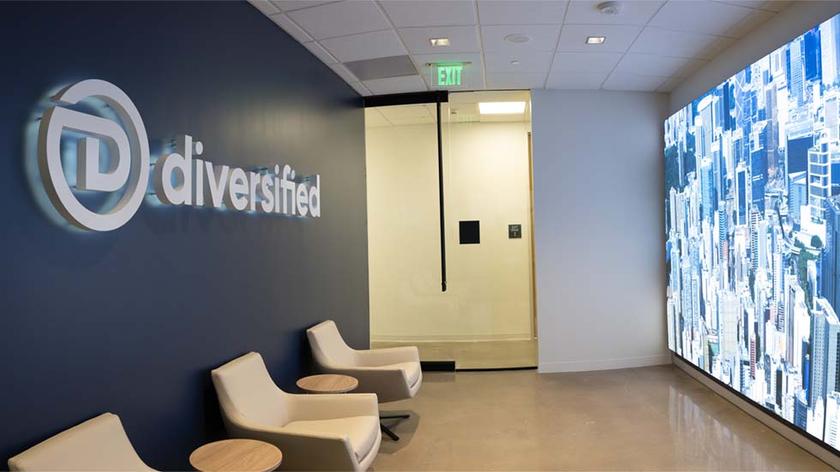Pro Audio Boards Continue to Evolve

Grind Music & Sound in Los Angeles recently adopted the Yamaha Nuage Advanced Production System.NEW YORK—Demands placed on audio engineers who work in the television industry continue to escalate, and the vendors who serve their needs continue to refine their products.
Consider this: For well over a decade, digital audio workstations have integrated video playback. This feature—implemented in response to the demands of film and television composers who need to score to picture— has been absent in broadcast boards. Last summer, however, Fairlight released the EVO.Live console, a board designed to switch between live and post-production modes. This console offers video playback and Fairlight’s Crystal Core engine. Manufacturers across the board are bumping up channel and effect counts.
The Crystal Core engine is central to Fairlight’s approach. Company CTO Tino Fibaek says that more changes are on the way. “Video integration is just one example of technology now being built into consoles,” says Fibaek.
Fairlight is also paying close attention to developments in the Internet of Things (IoT). Giving engineers the ability to control lighting effects at a live event with a fader, for example, will add another level of flexibility to the console, and allow the operator to multitask in ways that are currently not considered possible.
AUDIO OVER IP
Wheatstone is also paying close attention to developments in IP audio. Wheatstone television consoles are control surfaces; audio never passes through the boards themselves. The New Bern, N.C.-based company has been producing AoIP systems for years, and spokesperson Andy Calvanese expects increased movement in this direction.

Tino Fibaek, Fairlight “The AoIP market segment is one of the largest growth areas in our product line and we expect that trend to continue,” he said. “We’re expanding the number and type of devices that can be integrated into our AoIP network.”
According to Calvanese, many engineers don’t realize that with IP technology, the network switches and wiring are the audio system, and as such are responsible for the performance and reliability of a facility’s audio. “You can have the greatest audio console in the world,” he says, “but with undersized or unreliable network switches and substandard wiring, you will have audio problems. Network switches were not originally designed for the sustained high-volume packet loads that AoIP uses, so it is very important to choose them carefully and specify switches that have been proven to work reliably at the system size you are considering.”
DEALING WITH SMALLER STAFFS
Harman believes that advancements in automation will be central to the next round of advancements in consoles designed for broadcast, so look for greater flexibility in this area in the company’s Studer boards. For one thing, the downward trend in production budgets—resulting in personnel cuts— forces technical directors and staff to wear multiple hats. A problem for the engineer whose job was once confined to audio, this forced role expansion presents an opportunity for Studer, according to Rob Lewis, U.S. head of sales for the Stamford, Conn.-based company.
“News shows in particular are suffering,” says Lewis. “If you study local news programming you’ll often see an anchor talking about a topic—a new playground, say—while the background picture shows tanks roaming around Crimea! Syncing is a real problem. Reduced budgets, and the smaller staffs that result from cuts, have made things tough.”
Look for Studer to release boards that make it possible for the audio engineer to control elements previously assigned to other tech personnel in the future. It would be no surprise if Studer boards integrate video streaming at some point, as Fairlight consoles do, particularly since the company’s Sharc-based Infinity Core processing engine (released in January 2014) has resulted in a dramatic (and affordable) increase in power. Currently these gains have shown up in larger channel and buss counts, but some of the additional power could easily be applied to the video side of things.
A MORE EFFICIENT WORKFLOW
It’s no secret that Avid Audio has authored one of the most successful marketing campaigns in the history of the audio industry. Pro Tools, released in 1984 (when the company was known as Digidesign), became the default hardware/software platform in a very short time. In just a few years Pro Tools reached a near ubiquitous presence.
Challengers to Pro Tools have presented themselves over the last three decades. One of the most highly regarded was the Steinberg Nuendo platform. Blessed with an outstanding audio engine, an intuitive method of handling multispeaker audio, and a host of features designed specifically for the audio post market, Nuendo gained a loyal user base. In 2005, Steinberg was acquired by Yamaha, and the audio industry has been waiting for the release of a mature product that combines the strengths of both companies ever since.
In 2013 Yamaha released Nuage, a hardware/ software product aimed at the audio for broadcast industry. Nuage integrates Dante-based audio interfaces that allow for LAN-based networking and an efficient workflow that features assignable key commands and macros. Although Nuage offers MIDI functionality, composer/engineers who want to maximize these capabilities can purchase the Nuendo Expansion Kit, which combines all of the audio production, music production, and scoring tools that can be found in the Nuendo and Cubase 8 software sets.
Audio post facilities that specialize in composing and/or sound design along with mixing to picture are a natural fit for Nuage. One of them, Grind Music & Sound in Los Angeles, was formed in 2000 by Michelle Garuik and Sangtar Heer. Garuik says that while compatibility with Pro Tools is important, the manner in which Nuage integrates the deep MIDI functionality that’s central to Cubase—and the intelligent way keystrokes are assigned—were critical to the decision to go with Nuage.
“We chose the Yamaha Nuage Advanced Production System for its deep integration with Nuendo and Cubase,” she said. “It can control almost every function in these programs, making it the obvious choice for us. We use Nuage mainly with Nuendo, so compatibility with Pro Tools is a nice feature, but not a defining one for our facility.”
Garuik says they’ve used Pro Tools since the early 1990s and currently run v11.2 on both Windows 8.1 and OSX. “We mostly import Pro Tools and Avid edit sessions into Nuendo using AAF,” she said. “It works very well. We regularly receive Avid, Premiere Pro and Final Cut AAFs from editors and import them into Nuendo to edit and mix.”
Nuage has the MIDI capabilities found in Nuendo, but composers who want to mine all of the MIDI functionality that Cubase 8 offers can purchase the NEK package, which releases all of Steinberg’s flagship digital audio workstation power into Nuage. Grind opted to add NEK to their system, Garuik said.
“We can trade projects back and forth between Cubase and Nuendo seamlessly using the NEK package for Nuendo. This was one of the main reasons we invested in Nuendo early, because at the time, Pro Tools MIDI implementation was very limited for us. Most composers at that time were using Cubase or Logic along with Protools to perform MIDI tasks. Obviously, it is much better now, but when it comes to MIDI, VSTi’s [virtual studio technology] and composing in general, Cubase and Nuendo are still a natural choice for us.”
Console development is hardly in a static state. Look for more advancements through 2015 and beyond.
Get the TV Tech Newsletter
The professional video industry's #1 source for news, trends and product and tech information. Sign up below.













